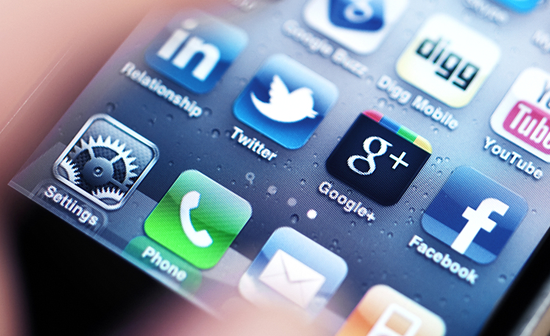Last month, a study in the US found the number of people found to be ‘at-risk’ of suicide on Twitter, state-by-state, is surprisingly similar to the state’s actual suicide figures.
The study, carried out by Brigham Young University, looked at over 1.5 million tweets, and found around 300,000 of them met the diagnostic criteria for being “at-risk” of suicide. Phrases like “I feel worthless”, “I’ve tried suicide” or mentions of family trouble were included in the search terms.
“We weren’t really surprised as we’ve seen before that Twitter has been useful for supporting trends through other means,” commented Josh West, a researcher who worked with the team in Utah on this project. “For instance, we’ve looked at searches for mentions of [the drug]Adderall, and that it trends with exam times in the US… [With suicide] we expected the relationship. But we didn’t expect the patterns to be so strong.”
The survey suggests that when people go on Twitter and post distressing messages, they are likely to be genuine, which might surprise those who believed the tweet-o-sphere belonged to trolls, or doubled as a news bulletin. The case of the digital suicide note has already appeared in tragic incidents like the death of rapper Freddy E., who posted a series of unsettling tweets before killing himself in January of this year.
God… please forgive me.
— Freddy E. (@Freddy_E) January 5, 2013
According to West, this study highlights the need to find the best way to intervene when we identify tweets that suggest a user is at risk. It also serves as further evidence that social media data can have value monitoring behaviors and social norms. He suggests that we can gather the same results as pencil-and-paper surveys but more efficiently and free of charge.
That, potentially, is the greater implication of this study: if Twitter is a platform for people’s suicide notes, then how should society react?
It won’t be a simple. For every person in need of genuine help, there are more who won’t qualify as clinically depressed or suicidal. So how do you know when to react? There are tweets that might be quite mild like, “I am actually useless” which can be more about letting off steam after a bad day or maybe to pick up a little sympathy from followers. Or, they may be actually calls for help.
For example, in 2009 Demi Moore received a worrying tweet from user ‘sandieguy’, which said ‘gbye… going to kill myself now’. The actor responded immediately by retweeting and asking whether she was serious or not. Her fans also responded, many offering condolences and calling the police to prevent the potential suicide. Happily, the event was prevented: sandieguy was taken into custody for “evaluation”.
However, the way the tweet was worded as well as the personality of the user, who regularly tweeted Moore and Kutcher suggests the event might never have taken place. In her tweet she said she had a “big knife” to kill herself. Death by ‘exsanguination’, or loss of blood, is a very rare form of death period; because people are often found before the necessary time. The fact that she had been tweeting them long before the incident suggests she may have been desperate for some attention from the stars. But, having said all that: how could Moore, or anyone, decide not to report it when a life was potentially on the line?
These false positives are a real concern because they could turn the great potential for Twitter as a data resource into a mess of information: some useful, some not. Nevermind potential ‘trolls’ who mine the sympathy of celebrities for their own gain, but plenty of people use phrases which, out of context, seem to be despairing:
“I hate myself” could either be a case of spilling milk over a laptop, or something very serious.
Hate when you’re deep in someone’s insta and you try to “zoom in” aka like that picture. I hate myself.
— Olivia Robles (@oliviavictoriaa) November 15, 2013
“I feel like the world’s against me” last words, or caught in a teenage angst?
is it the world against me.? #justwondering
— joshua antwon combs (@antwoncombs) November 15, 2013
“Thinking dangerous thoughts”… “About Dominos Pizza”
It’s at times like these when, unoccupied, I start thinking dangerous thoughts like “what would happen if I “accidentally” got a dog?”
— Lauren Redhead (@laurenredhead) November 8, 2013
There’s no way to tell what is what, apart from contacting the individuals and checking up on them. There are two problems with this tactic. First, most people would find this sort of surveillance a massive intrusion of privacy. Second, it would cost a huge amount of money to employ the people necessary for that kind of operation.
Currently, Twitter has a section on its website for people who are unsure of how to handle a suicidal situation. West and the team at Brigham Young University are continuing their investigation into how Twitter can be used to more effectively intervene in potentially dangerous situations.
There have also been some attempts to use live data for suicidal or depressed individuals, like Mobilyze, an app for smartphones which uses data on location and social context to assess the emotions of the person and Twitcident, which actively filters tweets in Denmark for “incidents”, and then alerts an emergency service.
Can these apps perform on a larger scale? In order for initiatives like Twitcident to be most effective, search terms, as well as the context of search terms, have to be very specific. Scaling up to a country the size of the US or China, both of which have relatively high suicide rates, will also require resources which may not be forthcoming in economies which have bigger fish to fry. So, if this process of identifying and preventing suicides is going anywhere, it’ll need to be streamlined by researchers.
The idea of a digital suicide note comes as a surprise to many people, who might think Twitter, Facebook or Youtube are not suitable places to share one’s last thoughts. But the phenomenon is here. And, although the threat of suicide is always troubling, that it happens as a live feed and in a way we can identify the troubled person is good news.
Suicide is an issue on the rise for countries around the world. However, we are now starting to grasp how the massive data store that is Twitter can be used for those people at-risk.
By Ilan Nass
-Written with love by the writers at Fueled, London designers of polished mobile apps.





3 Comments
Twitter’s main benefit is it being fast and real time. Most of the users use it for being aware of the news in real time. But the platform is now failing in increasing its userbase I believe now it has changed its user interface for attracting more users. I still remember people accounts getting hacked on Twitter I personally believe it played greatly in making twitter user-base become stagnant.
Thank you for sharing this so useful post. With the help of that so many people can save their lives from suicide.
Twitter’s primary advantage is it being quick and ongoing. The greater part of the clients use it for monitoring the news continuously. However, the stage is currently falling flat in expanding its userbase I accept now it has changed its UI for pulling in more clients. I actually recall individuals accounts getting hacked on Twitter I for one trust it played extraordinarily in making twitter client base become stale.